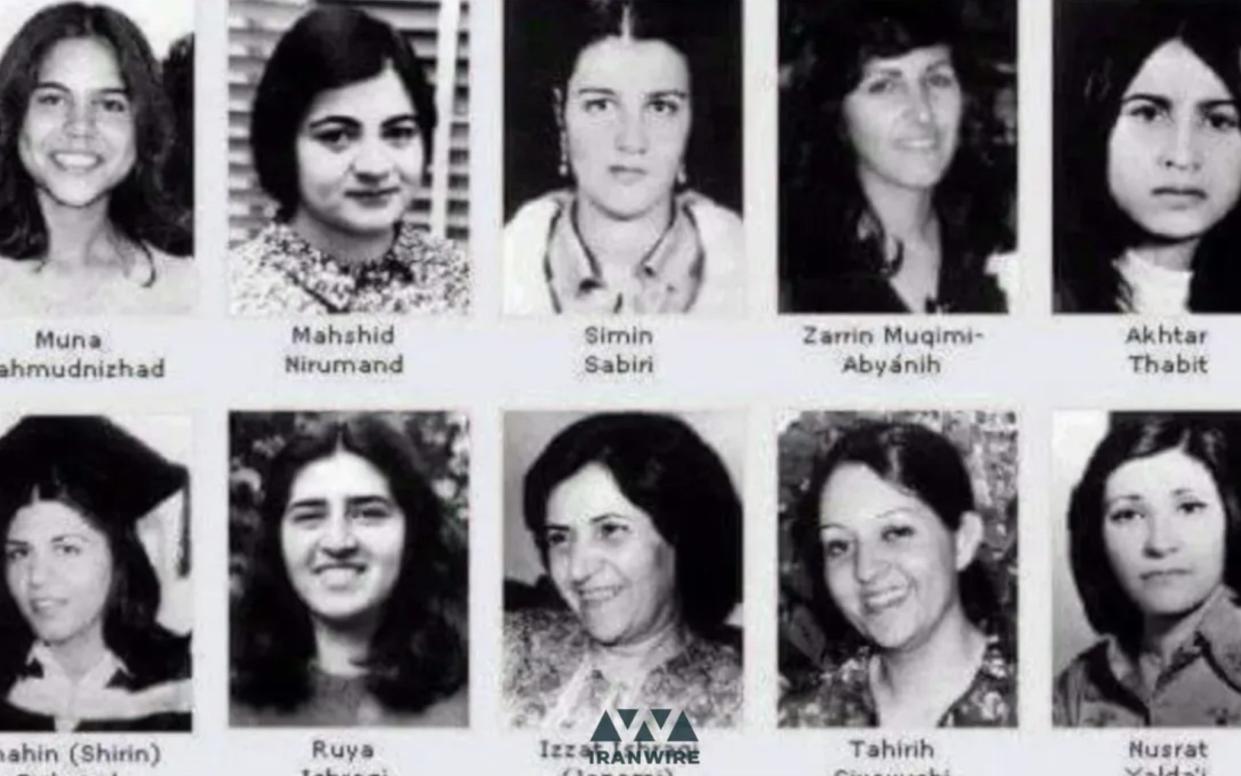The Iranian’s state’s brutal murder of Bahá’í women must not be forgotten

In the 44-year history of Iran’s “Islamic” Republic, one of the most heinous acts it has ever committed – from a preposterously large number to choose from – took place in the late hours of June 18 1983, when 10 Bahá’í women in Shiraz were hanged on the charge of refusing to renounce their religious beliefs.
One after the other, the women were forced to watch each other hang, supposedly to give a final opportunity to recant their faith and save their own lives. Each of them refused. The oldest was Ezzat, 57, who was hanged with her daughter, aged 23. Ezzat’s husband had been executed two days earlier.
Nosrat was 46, her son had been executed two days before. Most of the rest were in their 20s.
The youngest, Mona, whose father had been executed three months before, was 17. She asked to go last so that the others would not see her hang. When I initially heard the news, living my normal London life in leafy Kensington, the impact was strangely minimal.
I was also 17, born 20 days after Mona, but it was part of a stream of stories coming out of Iran of mass killings and executions. I was in a constant state of anxiety as a great many who were killed were friends and acquaintances of my parents.
Notable among these were the killings of the Bahá’í administrative body of the National Assembly members in 1980 and of the Tehran Assembly, unceremoniously shot in 1981, all of them known to us.
By June 1983, without the internet existing to give us any details to bring the story a little closer, the hanging of the 10 women of Shiraz seemed to become lost in the maelstrom. Iran was constantly on the TV news and my main concern was the social impact it had on me.
My school friends were aware but didn’t fully grasp what I was going through owing to my lack of confidence in being able to explain to them an important nuance: that I was part of a persecuted minority; that I was going through the double pain of association with a country full of violent fundamentalists that brought me deep social shame, but who were also murdering members of my own community.
It was two years later, when Mona’s story was captured in the pop song Mona with the Children, that I began to connect. I attended a gathering at the Bahá’í centre in London with Jack Lenz and Doug Cameron, the song’s writer, producer and singer. We got to know Mona as an exceptional young girl, definitely not a religious zealot. She was just a young girl trying to build capacities within children. Her personality connected with me.
We watched the video. The impact of the music with the images was overwhelming. And it was impressive to see the US actor Alex Rocco playing a mullah – a far cry from his role as casino owner Moe Greene in The Godfather, who is famously shot in the eye while on a massage table. What was important was that they had created art to keep the women’s memory alive. Even more so now.
Iranian women’s struggle for equality is older than many in the West may think. The 19th-century poet and scholar Táhirih exemplified the power of women to transform society. She was an early adherent of the Bábí movement, a precursor of the Bahá’í faith, and empowered by the teachings of her newly found faith, she rose up to announce a break with the past.
She notably caused profound shock when she removed her veil publicly at a conference attended only by men in 1848. In 1852, she was put to death by the Iranian authorities.
These words have been attributed to her just before she was executed: “You can kill me as soon as you like, but you cannot stop the emancipation of women.”
Today, in the blood, tears and wounds of thousands of young women in Iran seeking equality, we can see echoes of the injustice suffered by the 10 women of Shiraz 40 years ago. The same forces are still at work today deploying torture, mutilation and murder to deny Iranian women fundamental rights.
Many died within days of the best-known victim of the wave of femicides, Mahsa Amini, who was beaten by morality police for not wearing her hijab correctly and died in hospital on Sept 16 last year. Then Nika Shahkarami and Sarina Esmailizadeh, both 16, were killed during protests. So many of the dead are young girls: Hadis Najafi, 22, Mahsa Mogoi, 18; the list goes on.
The men of Iran also stand in solidarity with their mothers, sisters, wives and daughters and risk their lives. Many men have already been executed just for protesting.
I am in awe of their courage. But we are all deeply connected. I am proud to participate in the #OurStoryIsOne project to keep the memory of the 10 Women of Shiraz alive and inspire real change not only in Iran, but also for the whole world.
Omid Djalili is an actor, comedian and activist.

